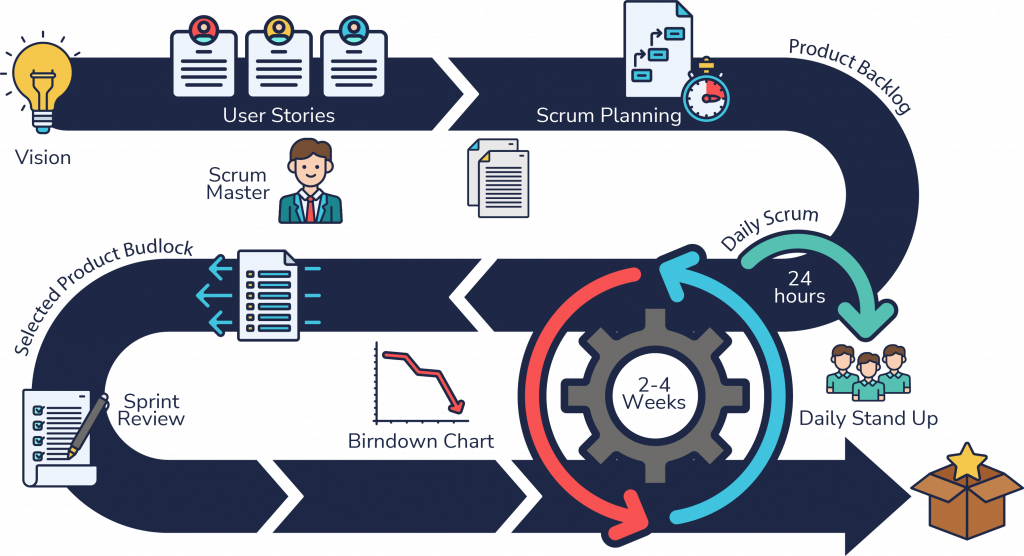Our Agile Development Teams usually use the Agile/SCRUM project methodology, offering benefits through its structured yet flexible approach. This methodology emphasizes collaboration, iterative development, and swift response to change, which aligns perfectly with dynamic project requirements.
The collaboration begins with the Project Manager and the SCRUM Master collaboratively clarifying the project requirements and preparing the product backlog, which is then prioritized and divided into regular time slots known as sprints. During each sprint, our team focuses on the most critical and urgent tasks, ensuring the delivery of additional updates. To ensure transparency and alignment, these updates are regularly reviewed with the client’s Product Owner.

